As the baby grows, the needs of his little body for saturation with new nutrients also increase. Breast milk provides maximum benefits in the first 6 months of feeding, then its need as a source of important vitamins decreases. After six months, breastfeeding begins to be diluted with new foods. By the first year of life, the baby can already completely switch to adult food. The menu of a child who is 10 months old is already almost entirely based on adult food, and mother’s milk is used as a snack, feeding before bed or at night.
Features of development and routine of a 10-month-old child
A baby who is already crawling, sitting up independently and learning to walk spends more and more time in a state of wakefulness.
Daytime sleep becomes less frequent (1-2 times a day), and meals are divided into 5 meals on average. A properly selected regime for a child allows him to feel comfortable, reduces irritability and moodiness. In addition, a proper home routine helps to quickly adapt to kindergarten. A 10-month-old baby is quite mobile, active and shows interest in everything he sees. In order for a child to feel as good as possible, he needs to follow not only a daily routine, but also a diet. At 10 months, when the main meals already include food from the common table, you need to know what foods and at what time of day are best to give to the baby. Five meals a day usually include 2 breakfasts, lunch and 2 dinners. An early or evening meal usually consists of breast milk or formula, but during the day it is advisable to gradually transfer the baby to food products that are familiar to everyone.
Features of the diet at 10 months of age
A child’s diet at 10 months is supplemented with new foods that are necessary to saturate the body with important microelements and vitamins.
At 10 months the child should eat:
- Vegetables. The very first vegetables that a baby gets acquainted with are: zucchini, cauliflower, broccoli, Brussels sprouts, carrots, pumpkin, potatoes. These are the least allergenic and most useful products after 6 months of a baby’s life. Then add greens (dill, parsley), onions, and green peas. It is better to steam or boil vegetables. They can be served separately, as an assortment or in combination with porridges and soups.
- Cereals. At the beginning of complementary feeding, the baby is introduced to rice, buckwheat or corn porridge. By the age of 10 months, oatmeal and pearl barley are added to the list. You can prepare cereal separately in combination with vegetables, meat, add it to soups or cook it in milk. Cereals are an essential component of a baby’s diet, as they saturate the body with the necessary carbohydrates and proteins.
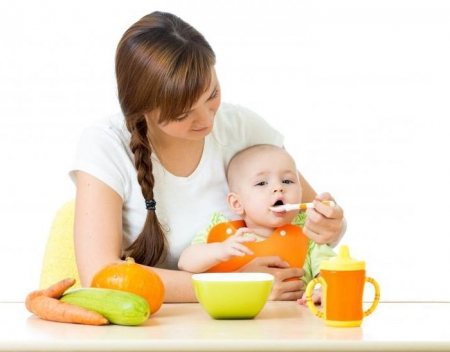
- Meat. Before the first year of life, a child should know about such types of meat as chicken, rabbit, turkey, veal and lean pork. Then you can get acquainted with by-products, such as liver and heart. Meat must be included in the diet, since protein ensures the growth and development of a young body. It is better to cook meat dishes steamed in the form of cutlets, meatballs, or separately boiled.
- Fish. Fish dishes should be served on the children's table only after familiarization with meat. This is approximately 9-10 months. The first to be used are hake, pollock, and cod. The fish also needs to be steamed or boiled, checking as carefully as possible for the absence of bones. It is advisable to pamper your child with fish dishes at least 2 times a week.
- Fruits. At 10 months, the child should already be eating apples, pears, bananas, plums, and currants. It is important not to rush to give red berries and exotic fruits, as they can cause allergies. Fruits should be on the menu every day, because the fiber and carbohydrates they contain improve the functioning of the stomach and intestines and promote better absorption of beneficial vitamins and minerals.
- Dairy products. Cottage cheese, kefir or yogurt can be given from 6 months. These should be exclusively natural, fresh products from the store, or prepared at home using starter cultures. These dairy treats should be given to your child as a snack. Fermented milk products have a beneficial effect on the growth and strengthening of bones, as well as on balancing the intestinal microflora.
- Liquid. If the baby is already 10 months old, then in addition to breast milk he should drink distilled water, juice, compote, and jelly. Dried fruits (from apples, pears, apricots, plums) are well suited for making compotes; juices should only be natural without sugar, but preferably in a diluted form.
What additional products are introduced?
To ensure the proper development of the child’s body, it is necessary to dilute the diet with new foods. After 10 months, vegetables should be given to the child to try white cabbage, spinach, cucumber, and beets. From cereals, wheat and semolina porridge are added to the diet. It is worth noting that semolina is quite allergenic and promotes weight gain. Therefore, you should start using it based on the child’s tendency to allergies and his weight. After the age of 10 months, you can supplement the child’s nutrition with river fish, such as carp, river perch, and trout. At this age, you can try giving raspberries, strawberries, cherries, kiwi, and watermelon as fruits.
Some mothers are worried about what to feed their baby at 10 months if he is bottle-fed. There are no differences in the procedure for introducing complementary foods between natural and artificial feeding. The only thing is that you can start introducing new products to a baby who is fed an adapted milk formula a month earlier.

The menu of a 10 month old baby includes many basic and additional products.
Baby's nutrition at 10 months

A child's diet at 10 months is very varied. The baby already eats the main set of vegetables, all types of cereals, dietary meats, and fruits. These products provide a complete diet that saturates the body with vitamins and microelements.
Table of contents
|
Baby 10 months: how much to feed, basic principles of nutrition
By the age of 10 months, a child eats 5-6 times a day.
At night, the baby can eat 1 time or sleep all night. It depends on the needs of the baby.
What can a child at 10 months:
- Vegetables - zucchini, all types of cabbage, potatoes, carrots, beets.
- Porridges – gluten, gluten-free.
- Fruits (juices, purees) – apple, pear and others.
- Yolk.
- Dairy products for children.
- Dietary meat.
- Fish (sea fish only).
- Bread, crackers, cookies.
Depending on the type of nutrition, the baby also receives formula or mother's milk. First they give complementary foods, and then breast milk or formula.
Artificial and breastfeeding at 10 months
The baby must be breastfed morning and night. The rest of the time, breastfeeding is carried out only after a full meal (porridge, soups, purees, kefir).
Night feedings are done if the mother wants to continue breastfeeding or the baby wakes up to eat on his own.
If you refuse night feeding, the amount of milk decreases sharply within 2-3 days.
By the age of 10 months, breast milk no longer provides the required amount of vitamins and microelements, so the diet is based on adult foods.
The main function of milk after six months is to increase the child’s immunity due to the content of immunoglobulins.
When artificial feeding, the mixture is also given in the morning after porridge and at night. Feeding at night is carried out more often than once, less often twice.
Vegetables
Vegetables should be present in a child’s diet every day. They improve digestive function and nourish the body with vitamins.
You can make puree yourself or use industrial products. Vegetables need to be cooked for about 30-40-60 minutes, depending on the type of product, until they are soft.
Vegetables are used to prepare purees, casseroles, and soups. Basic list of vegetables:
- broccoli;
- zucchini;
- cauliflower;
- White cabbage;
- potato;
- carrot;
- beet;
- peas.
If the baby suffers from allergies, it is preferable to give industrial products. They are hypoallergenic and adapted for the baby's digestive tract.
Beets are given little by little. More often it is added to vegetable soups, borscht, and combined vegetable puree.
Beets should not be given in their pure form. It irritates the stomach and weakens the stool.
Peas can be added to vegetable or meat puree. It is not recommended to cook pea soup. This will increase gas formation.
At 10 months, the child is actively preparing vegetable soups. Ground meat or industrial meat puree is added to them.
Useful tips for mothers: NUTRITION AND NOT ONLY BY MONTH
It is necessary to cook in small portions so that there is enough for 1 feeding. You cannot cook food for several days.
Cooked food breeds bacteria, which can lead to food poisoning.
Porridge
A 10 month old baby must eat porridge at least once a day.
List of grains allowed for this age:
- buckwheat;
- corn;
- oats;
- millet;
- wheat;
- barley;
It is not recommended to give semolina to 10-month-old infants, as it contains a large amount of carbohydrates and gluten.
It is advisable to give commercially produced porridges up to 1 year of age, which are specially adapted to the baby’s digestive tract.
Industrial porridges are well processed, ground, contain a minimum amount of allergens, and are fortified.
It is recommended to give porridge for breakfast. Cereals must be alternated with each other so that the baby does not get bored and does not develop a deficiency of microelements.
You can give porridge with fruits or vegetables, taking into account the child’s preferences.
Industrial cereals are sold with various additives:
- apple;
- pear;
- apricot;
- peach;
- banana and others.
The main condition for introducing cereals with additives is that the fruits included in the product must be introduced in advance.
Fruits
Nutrition at 10 months must contain fruit. They are sources of vitamins and fiber. Fruits are given in the form of purees or juices.
Basic list of fruits:
- apple;
- pear;
- apricot;
- peach;
- plum;
- banana (if there is no allergy).
It is allowed to introduce currants, blueberries, and strawberries. If a baby has an allergy to bananas or berries, they are tried to give them only after a year.
It is advisable to buy industrial fruit puree, but you can make it yourself.
An apple or other fruit is ground on a grater or blender. It is recommended to give it to the baby immediately after grinding.
Fruit puree cannot be stored. It loses vitamins and accumulates pathogenic bacteria.
Meat
A baby must eat meat for 10 months. This is a source of iron. It helps synthesize hemoglobin, which prevents the development of anemia.
After 6 months of age, the concentration of iron in breast milk decreases sharply, so meat is included during this period. List of meat products:
• turkey;
• rabbit;
• chicken;
• beef;
• mutton.
Meat is often given in the form of puree. It is bought in children's or grocery stores. The child must eat the entire jar. Do not leave an open jar in the refrigerator. Bacteria multiply there.
It is allowed to cook meat for the baby yourself. Cook it for 2-3 hours. After cooking, take out the pieces, cool, and grind with a blender.
It is allowed to make soups from meat. Cook the soup with 2 broth. To do this, raw meat is boiled for an hour in water. After 60 minutes, drain the broth, add water again, and cook for another 1 hour.
Only after this the broth is seasoned with vegetables and cereals. The cooked meat is ground. Before serving, chop the soup with a blender or fork.
Soup with 1 broth (strong) should not be given to a child. It contains a lot of fats and toxins that the pancreas cannot cope with.
Early introduction of strong soups leads to dyspepsia and diseases of the digestive tract.
The meat is also used to make meatballs and steamed cutlets. To prepare them you need white bread, minced meat, yolk, and milk. A child should not fry cutlets.
Fish
A 10 month old baby should eat fish 1-2 times a week. It is given in the form of puree or cutlets. It is better to offer industrially produced purees.
It is less allergenic. It is recommended to include sea fish:
- cod;
- hake;
- navaga;
- flounder;
- whiting;
- sea bass;
- pollock.
You can prepare puddings, meatballs, and purees from fish at home. Fish should be of good quality and fresh.
Cottage cheese, kefir
Cottage cheese is a source of calcium. It is recommended to give it up to 2-3 times a week. A 10-month-old baby should eat no more than 50 g of cottage cheese per day. It is not advisable to give more than 50 g. This increases the load on the kidneys due to excess protein.
Kefir is offered to the baby 1-2 times a day. More often it is given during the afternoon snack or before bedtime.
Kefir contains bifidobacteria, which have a positive effect on digestion, populating the intestines with microflora. The fermented milk product is especially recommended for children with dysbacteriosis and constipation.
Sample daily menu for a 10-month-old baby
The baby's diet should be varied. It should contain bread, meat, fish, cottage cheese, vegetables, fruits and other products.
Approximate diet for day 1 option:
| Time | Diet |
| Breakfast 7:00 | oatmeal porridge 200 g (yolk 1/2), mixture 50 ml (breast milk) |
| Second breakfast 10:00 | kefir 200 ml, baby cookies 2 pcs. |
| Lunch 13:00 | vegetable soup with the addition of boiled beef (150 ml), puree: chicken + vegetables – 50 g, apple juice |
| Afternoon snack | mixture 200 ml (breast milk), cookies 2 pcs. |
| Dinner | whiting fish pudding (50 g), mashed potatoes (100 g), mixture 50 ml |
| 2 dinner | fruit puree (apricot) 50 g, mixture 150 ml |
With this option, the baby sleeps all night without waking up to feed. Second menu option:
| Time | Diet |
| Breakfast 7:00 | buckwheat porridge 200 g (+ yolk 1/2), mixture 50 ml (breast milk) |
| Second breakfast 11:00 | kefir 200 ml |
| Lunch 15:00 | chicken soup (boiled without skin) in a second broth with potatoes, carrots, cauliflower (150 ml), puree: beef + zucchini – 50 g, apricot juice – 50 ml |
| Afternoon snack 17:00 | formula 200 ml (breast milk) |
| Dinner 21:00 | hake fish puree (50 g), cauliflower (100 g), apple juice 50 ml |
With this diet, the baby will need to be fed 1 time at night with formula or breastfeeding. For breakfast, dinner or afternoon snack (instead of kefir, mixture, porridge) you can give cottage cheese.
What is not recommended for a 10 month old baby
There is a list of foods that should not be given to a 10-month-old baby:
- river fish (very allergenic);
- whole milk (provokes allergies, dyspepsia);
- tomatoes (allergenic);
- strong meat broths (overload the pancreas);
- ear (allergenic);
- fried, smoked, fatty foods, including pork, pork broth (they load the digestive tract and contain a lot of salt);
- confectionery products (very sweet, overload the pancreas).
Children under one year of age are not given black bread. It causes bloating. You cannot include cucumbers, sweet and carbonated drinks. Children's food is not salted or spices are added.
A proper diet helps keep your child healthy for life. Rational nutrition by the hour maintains normal weight, prevents overeating and the occurrence of diseases of the digestive tract.
Before drawing up a menu, it is recommended to consult a pediatrician to exclude the occurrence of allergies and dyspeptic manifestations.
- about the author
- Recent publications
Olga Kuznetsova
author of the publication (site editor)
DOCTOR - PEDIATRIC Education: Siberian State Medical University. Certificate of specialist in the specialty "Pediatrics"
Olga Kuznetsova recently published (see all)
- At what age can a child have an omelet - 10/05/2020
- Hypoallergenic diet for mom - 10/03/2020
- How to introduce eggs into complementary foods for a child - 09/27/2020
General tips and recommendations for feeding a 10-month-old baby
The main recommendation for a child’s diet, not only at ten months, but at any age, is a balanced menu. The daily menu should be varied, and it is also necessary to control the number of portions per day and per week. For example, it is recommended to give fish dishes and boiled yolk no more than 2-3 times a week. You can’t focus on one type of meat or fish. For its growth, a small organism requires different types of nutrients, which can be found in different products. The main thing is not to forget that acquaintance with a new product should be done with caution and start with a small portion. The lack of reaction in the baby indicates that the body has accepted the new component and you can safely introduce it into the diet.
General recommendations:
- If the baby already has several teeth by this age, then the food can be served not chopped, but sliced. He should already be learning to chew solid food on his own.
- You can try giving your baby a spoon to eat on his own.
- The child should also learn to drink independently from a cup.
- During meals, it is advisable for the child to focus only on food.
What is included in the diet
At 10 months of age, foods are introduced that were previously prohibited due to the risk of allergies. By this time, the baby’s digestive system should be strong enough to accept these dishes.
At this time, the child can begin to be given egg yolk . Many people start with a quail egg, which contains more calcium, iron and vitamins and is considered less dangerous from an allergy point of view. For the first acquaintance, 1 quail yolk or 1/4 chicken yolk is enough, which can be added to soup or porridge. Then gradually double the portion.
The second important “guest” of the children's menu is low-fat and non-red fish . It is introduced into the diet, starting with 25 g once every 5 days, served in the form of meatballs or steamed soufflé. Make sure there are no seeds in the pieces.
Fruit juices , which were previously recommended to be introduced after the first 6 months of life, are now advised to be saved for the 10th month. You need to start traditionally with apples and pears. If you prepare the juice yourself, use green fruits: grind the pulp on a fine grater and squeeze through cheesecloth. 100% juice can be diluted with boiled water. The first serving is 1 tsp, after which it is necessary to monitor the allergic reaction and changes in stool. If the baby copes well with the new product, the volume of the drink can be gradually increased to 100 g.
Fruit juices, which were previously recommended to be introduced after the first 6 months of life, are now advised to be saved for the 10th month
From fermented milk products, cottage cheese , which is necessary for the growth and development of the musculoskeletal system. If the baby is already receiving complementary foods in the form of kefir, then the daily portion of cottage cheese should be about 50 g. If the taste of pure cottage cheese causes a protest in the child, it can be softened by adding fruit or preparing a casserole or pudding from the product.
The difference between feeding babies on breastfeeding and IV
Since at the age of 10 months the main emphasis in the diet shifts to adult foods, the value of breast milk or an adapted formula decreases. It is recommended to give milk at night or in the morning. The procedure for introducing complementary foods and the daily menu does not depend on what type of feeding the baby is on.

Sample menu for a 10 month old baby while breastfeeding:
- First breakfast (6-7 hours) – breast milk;
- Second breakfast (10-11 o’clock) – milk or dairy-free porridge, fruit, compote;
- Lunch (14-15 hours) – soup or vegetable puree, meat (fish) cutlets, boiled yolk, juice;
- First dinner (18-19 hours) – cottage cheese, yogurt (kefir), fruit, cookies, compote;
- Second dinner (22-23 hours) - breast milk.
Sample menu for a 10-month-old baby with artificial feeding:
- First breakfast (6-7 hours) – adapted milk formula;
- Second breakfast (10-11 o’clock) – milk or dairy-free porridge, fruit, compote;
- Lunch (14-15 hours) – soup or vegetable puree, meat (fish) cutlets, boiled yolk, juice;
- First dinner (18-19 hours) – cottage cheese, yogurt (kefir), fruit, cookies, compote;
- Second dinner (22-23 hours) - adapted milk formula.
Approximate daily schedule
The menu of a 10-11 month old child, including five meals a day, may look something like this.
- After a night's sleep (about 6-7 am), the first feeding is carried out. It must consist of mother's milk. You can include kefir in the menu. The total volume of food should reach 200 ml. If the baby wakes up later, around 8 a.m., there is less need for breast milk. In this case, you can immediately cook the porridge with breast milk.
- The second menu item is second breakfast. At this time, the baby needs to eat thoroughly. You can cook him any porridge from cereals (100 g) that do not contain gluten (oatmeal, buckwheat, rice). You can cook porridge using breast milk or pasteurized milk diluted with water. You can boil half a chicken yolk and add 1 gram of butter. After porridge, you can feed your child fruit puree (50 g).

- An 11-month-old child's lunch menu must include fish or lean meat. From fish you can choose pollock or hake, from meat - veal, turkey, chicken. In addition, a vegetable dish (at least 150 g) should be served. The best option is noodle or vegetable soup.
- The nutrition of an 11-month-old baby who is breastfed, as before, as at 10 months, does not yet include a hearty dinner. Therefore, the fourth feeding occurs at the time when the afternoon snack is served. At this time, it is better to offer fermented milk products (150 ml), you can have cottage cheese with raisins or a casserole made from it (50 g), or fruit puree (40 g).
- The last feeding, which is included in the daily menu of a 10-11-month-old child, is carried out before bedtime and is more of a kind of ritual. While at the breast, the baby calms down and gets ready to sleep.
If you properly organize your child's nutrition during the day, the baby will sleep soundly at night without needing additional feeding.
What foods are included in the diet?
A child's diet at the age of ten months should primarily consist of vegetables, cereals and meat. You can diversify your diet with new fruits, berries, and juices. Fermented milk products cannot be ignored. Cottage cheese, milk, kefir, yogurt - undoubtedly, should be on the daily menu of a ten-month-old baby.
Vegetables and fruits
Fiber, which fruits and vegetables are so rich in, helps the body better absorb food, promotes its growth and improves the functioning of the gastrointestinal tract. Vegetables should be only natural, without chemical additives. The diet of a 10-month-old child includes almost all types of vegetables (pumpkin, zucchini, beets, potatoes, cauliflower and white cabbage, onions, carrots, greens), as well as fruits (apple, banana, watermelon, pear, raspberry, strawberry, currant, cherry ). You need to be careful when introducing red or exotic fruits, as they can cause an allergic reaction.
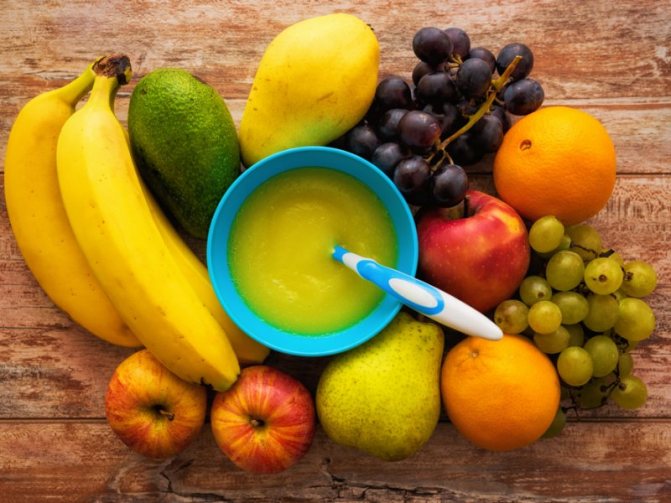
Cereals
Porridges, which are rich in proteins and carbohydrates, saturate the child’s body with the supply of necessary vitamins and beneficial microelements. Recommended cereals at this age include rice, buckwheat, semolina, corn, wheat and oatmeal.
Meat and fish
Meat and fish should be low-fat varieties and reach the baby’s table as fresh as possible. All lean types of meat can be used to make cutlets, meatballs, or given as puree. The fish can be either river or sea, the main thing is to ensure that there are no bones in the meat. You can give hake, pollock, carp, trout, pike perch 2-3 times a week, with a total amount of 30 grams. Red fish should not be included in the diet of a 10 month old child.
Dairy
Fermented milk products during this period help provide the growing body with calcium and other beneficial substances. It is good to use homemade cottage cheese or kefir with sourdough for feeding your baby. It is important to remember that an excess of dairy products is also undesirable for the baby, since undigested calcium settles in the kidneys and can provoke the development of kidney diseases.
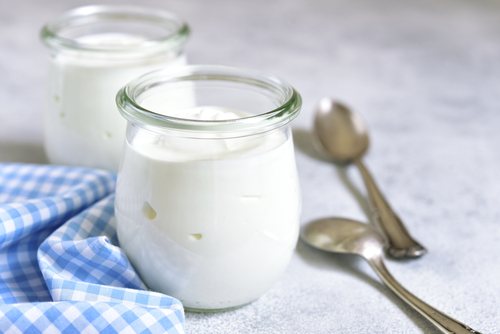
Oil
Vegetable oil (olive, corn, sunflower) or butter can be added to cereals, soups, and purees. This will not only improve the taste of the dish, but also provide the body with the necessary fats. The daily norm of oil is no more than 5 grams.
Wheat flour products
Products made from wheat flour for the baby's first acquaintance should be in the form of biscuits, crackers, later (at 10 months) noodles can be given with or without milk.
Egg yolk
Boiled egg yolk from a chicken or quail egg will provide the child’s body with vitamins A, B, E. It can be given up to three times a week. It is advisable to avoid egg whites for up to a year, as they are a strong allergen.
Drinks and juices
The child's diet should also be based on proper drinking regimen. It is necessary to offer the child water (it must be purified or boiled), compote, juice (freshly squeezed diluted). Kefir is also one of the drinks that is recommended to be given to your child daily. It is advisable to prepare it at home yourself using store-bought starters.
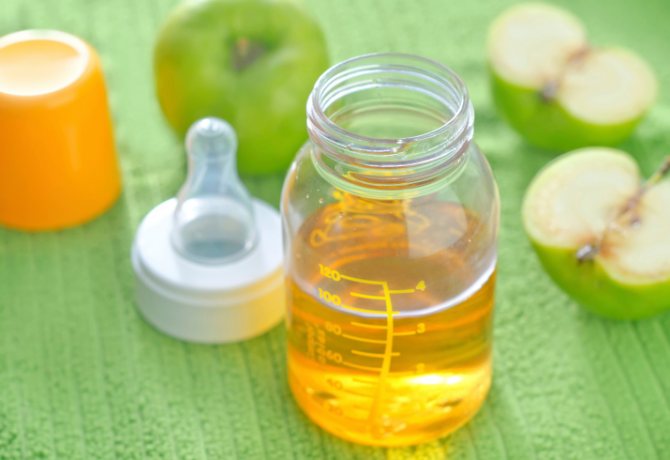
Acceptable and recommended foods for feeding a 10 month old baby
Not all types of food are suitable for a fragile body. A child's diet at 10 months should consist of these products:
- Cereals. Buckwheat, millet, rice - all this can be used to prepare porridge. Oatmeal is no less useful. They can be boiled in water and milk.
- Fruits. Apples, peaches, apricots, bananas and various berries are well absorbed by the child's body. Plums and pears should be given in small quantities, as they affect the baby's stool.
- Vegetables. You can prepare soups, side dishes and salads for children from them.
- Meat. Low-fat types are suitable for feeding babies - turkey, rabbit, young veal, chicken.
The main diet should include baked goods. It is advisable to give children rich white fresh bread.
Additional products for a 10 month old baby
In addition to the components of the main diet, these products can be included in the menu in small quantities:
- Fish. Its low-fat white varieties are suitable.
- Eggs. Quail ones are especially useful.
- Milk products. This includes low-fat curds and yoghurts.
Freshly squeezed fruit juice is not served to children in concentrated form. It must be diluted with boiling water and then cooled.
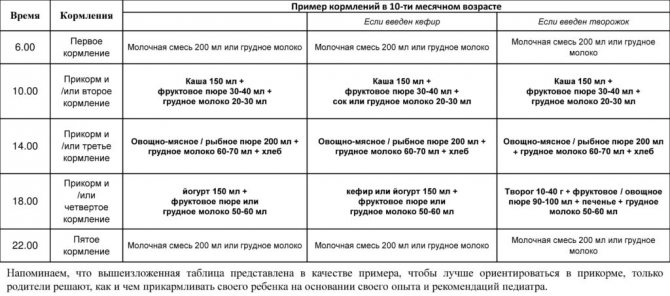
The diet of a 10-month-old child is a complex of fortified and nutritious foods.
Recipes for a 10 month old baby
Expanding the list of acceptable products on the menu of a 10-month-old breastfed baby will allow you to diversify dishes using different recipes.
Soups
It is better to prepare soups for a child after he has already tried all the components separately. It is advisable to start giving your baby soup based on vegetable broth. If the time has come for soup with meat, then you need to prepare the broth using the second water (first boil the meat, drain the water, then add clean water for the broth and continue cooking).
Vegetable soup
You can only use vegetables that your child has already tried. Potatoes, carrots, and cabbage are good for making baby soup. Vegetables need to be boiled in slightly salted water, add a little milk and boil everything together. The finished soup can be pureed in a blender or served in its original form - with vegetables cut into small cubes.
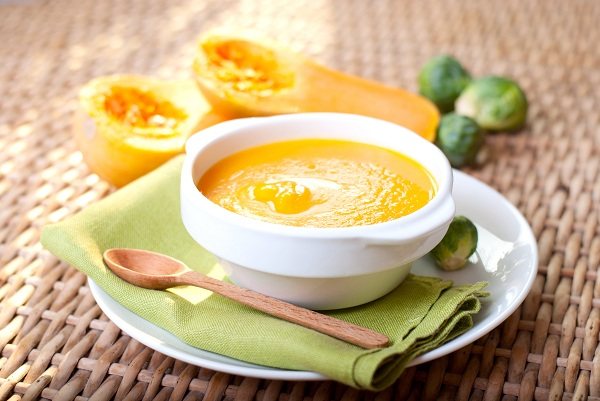
Cream soup
Dishes using zucchini, pumpkin or cauliflower should preferably be served as a puree. To prepare puree soup, you can take zucchini and cabbage in equal proportions. Vegetables must be boiled, then ground through a sieve or blended in a blender with the addition of vegetable broth and boiled chicken yolk.
Porridge
Dishes of various cereals, which must be on the menu of a child who is already 10 months old, can be prepared with both water and milk. If this is a dairy-free porridge, then you can add vegetable or butter, as well as vegetable or meat puree. If cereals are prepared with milk, then you can diversify them with fruits (banana, raspberries, strawberries).
Meat and fish dishes
It is best to prepare minced meat and fish, which can then be used to prepare steamed cutlets, meatballs, and meatballs. They can be frozen in their raw form and used later as needed.
Meatballs
To prepare this dish you will need minced meat, white bread, milk, yolk and butter. Minced meat and bread soaked in milk are mixed. Then add raw yolk, butter, and a little salt. The contents must be thoroughly mixed and formed into balls. You can cook them by steaming or in the oven.
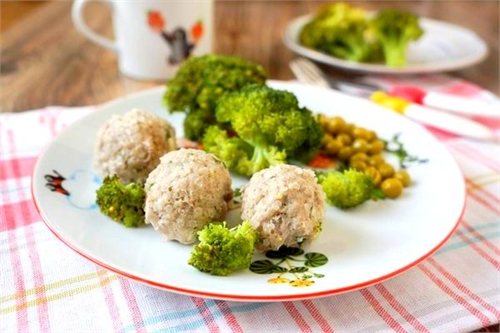
Cutlets with zucchini and oatmeal
To prepare cutlets, 300 g of minced meat must be mixed with 100 g of zucchini (grated). Then crushed oatmeal (30 g) is added to the minced meat, salted a little, and cutlets are formed. It is better to cook this dish by steaming.
Vegetable and fruit dishes
Fruits at 10 months of age can be given raw. It will be very good to mix a grated apple with grated carrots and offer it to your baby. You can add a little vegetable oil. Some fruits and vegetables also go well in boiled puree. You can combine carrots, pumpkin, apple, pear, apricot, and peach in one dish.
Pumpkin-apricot puree
To prepare this dish, you need to boil 2 medium-sized apricots and 200 g of pumpkin pulp. Grind the contents on a sieve or beat in a blender.
Cottage cheese dishes
Cottage cheese for a child can be given both raw and in the form of casseroles.
Cottage cheese casserole
To prepare the dish you will need 300 g of cottage cheese, 1 egg, 70 ml of milk, 2 tsp. semolina, 3 tsp. Sahara. Pour milk over the semolina and grind the cottage cheese through a sieve. Mix cottage cheese, semolina, sugar, add egg and beat with a mixer. Pour the mixture into the mold and bake in the oven until done.
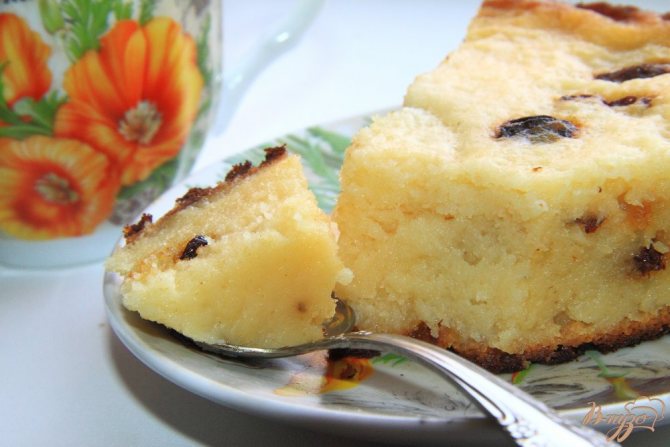
Dessert
To improve the taste, you can combine fermented milk products with fruit and end up with a new, mouth-watering dessert.
Dessert with cottage cheese and banana
To prepare, you need to mix 150 g of grated cottage cheese with half a chopped banana. Then you need to add 2 tbsp. spoons of milk and a little sugar. Dessert is ready.
Baked apple with cottage cheese
First you need to make the curd mixture. To do this, add a pinch of semolina, sugar and half the yolk to half a glass of grated cottage cheese. Fill a washed, cored apple with the curd mixture and bake in an oven preheated to 180 degrees.
Sample menu table for the week
In order to correctly calculate the necessary products and make the child’s diet more balanced, consider the approximate composition of the menu for the week in the table.
Table of an approximate menu for a child aged 10 months for a week:
| 1 breakfast | 2 breakfast | Dinner | 1 dinner | 2 dinner | |
| Mon | Breast milk or formula | Milk buckwheat porridge, fruit, tea | Vegetable soup, mashed potatoes with cutlet, compote | Curd casserole, jelly | Breast milk or formula |
| VT | Breast milk or formula | Milk rice porridge, fruit, jelly | Pumpkin puree soup, carrot and potato puree, steamed fish, juice | Fruit puree, kefir, cookies | Breast milk or formula |
| SR | Breast milk or formula | Curd pudding, boiled yolk, juice | Soup with meat broth, zucchini and pumpkin puree, steamed meatball, compote | Vegetable puree, jelly, cookies | Breast milk or formula |
| Thu | Breast milk or formula | Milk corn porridge, fruit, fruit drink | Chicken broth, mashed potatoes with cutlet, tea | Cottage cheese with fruit, jelly | Kefir |
| PT | Breast milk or formula | Vermicelli with milk, jelly | Buckwheat soup with meat broth, vegetable puree, steamed fish, juice | Yogurt, fruit puree, cookies | Breast milk or formula |
| SB | Breast milk or formula | Milk buckwheat porridge, herbal tea | Pumpkin puree soup, boiled vermicelli, boiled meat, juice | Milk porridge, compote | Breast milk or formula |
| Sun | Breast milk or formula | Boiled vermicelli, boiled yolk, fruit | Rice soup with meat broth, mashed potatoes and pumpkin, cutlet, compote | Vegetable puree, cottage cheese, tea | Kefir |
Important! This table indicates the approximate composition of the diet and is not binding. It is important to take into account the baby’s physical condition, weight and his tendency to allergies.
How much should a child eat?
The consumption rate depends on the child’s age, physical condition, and weight. But there is a formula by which you can determine the daily intake, depending on the baby’s weight. So, the child’s weight should be divided by 9. This will be the amount of food that should be limited to per day. So, since a 10 month old baby weighs on average 8-10 kilograms. Then the daily norm for him will be 1000-1250 grams. If divided into 5 doses, you will get approximately 200-250 grams per feeding. This is what mothers who don’t know how much food to prepare at a time should take as a starting point.
It is necessary to understand that certain products also have restrictions on the amount of consumption per day. So, a 10-month-old child can eat no more than 80 g of meat per day, no more than 30 g of cottage cheese, no more than 50 g of fish, and up to 110 g of fruit.
What problems may arise and how to solve them?
At the age when a child begins to smoothly switch to adult food, it becomes difficult for him to do without his mother’s breast or his usual bottle all day. The transition to adult food should be smooth and not cause discomfort in the child. Also, you should not think that when complementary foods are fully introduced, you need to wean off the breast. Pediatricians recommend breastfeeding or an adapted formula for up to 1.5-2 years. It is enough to do this once or twice a day to maintain lactation.
Not all products are tolerated and perceived by the child’s body in the same way. If for some reason a child at 10 months does not accept this or that new product (allergies, problems with stool, colic, poor sleep), then it is necessary to temporarily abandon this ingredient. It is advisable to continue getting to know him after 2-4 weeks.











